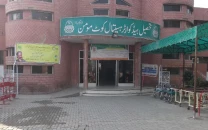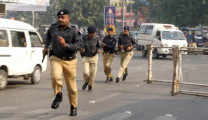Village women trek to urban areas to sell camel milk
Ghanta Ghar Chowk and Daulat Gate are some areas in Multan where women sell camel milk

Village women trek to urban areas to sell camel milk
Every morning women from far flung villages in south Punjab make the strenuous journey, with their camels, to urban centres in order to sell fresh milk.
Ghanta Ghar Chowk and Daulat Gate are some of the areas in Multan where these women sell camel milk. Proudly displaying their camels, these women try their hand at marketing by informing passers-by of the benefits of camel milk. Then they seal the deal by milking the animal in front of an apprehensive audience, assuring potential customers that the product is pure and hygienic.
Bakhtawar Ameen Medical College Paediatrics Department Head Dr Hafiz Abdul Ghaffar says that camel milk is a healthy option for humans.
“It has a lower amount of cholesterol when compared to cow’s milk. It also has more fat, protein, iron, vitamin B and vitamin C,” he says.
Camel milk stimulates the immune system and reduces the risk of heart diseases. It improves digestion and prevents stomach problems and liver infections, he adds.
It is also an effective alternative for diabetic patients and those suffering from arthritis, he says.
“Milking camels is not an easy job,” says Hikmat Khatoon, who journeys to the city with her sister every day.
“It is more labour intensive than milking buffaloes. They are easily startled and need to be controlled carefully,” explains Naseema, another seller, while she milks a camel with practised skill.
This is our main source of income. We use the money we earn on our children and family, adds Hikmat Khatoon.
Rukhsana Mai says that rearing camels is easier than rearing cows and goats. “Camels can make do with less fodder as compared to other animals and can also store water,” she says.
She states that she owns six camels and sells approximately 15 kilogrammes of milk every day for Rs100 per kg.
“The milk output depends on the season. In summer, milk production usually goes down. In contrast, it goes up during winter, so we have to move from one place to another in order to sell the excess,” she maintains.
Sughran Bibi, another seller, says that she has been involved in this business for the past 10 years and has been able to fulfil the basic needs of her children with this income.
“My husband died three years ago, leaving behind me and my three daughters. Selling milk is my sole source of income,” she says.
This town is approximately 70 kilometres away from my home. I have to cover this distance on foot in order to make a living, she explains.
The women say that the government should pay attention to camel milk production. We have heard that the present government has pledged to provide hens to women. The government must also help and facilitate those women who are rearing camels and trekking long distances to sell its milk, the women articulate. They should set up small centres in Lahore to facilitate the women, they add.
They must also make an effort to increase the product’s popularity. In villages, patrons do not pay more than Rs50 for a kilogramme of camel milk because they are not aware of its benefits.
Because of this, we travel to cities to sell milk because the residents are well informed about the benefits of camel milk, they state.



















COMMENTS
Comments are moderated and generally will be posted if they are on-topic and not abusive.
For more information, please see our Comments FAQ